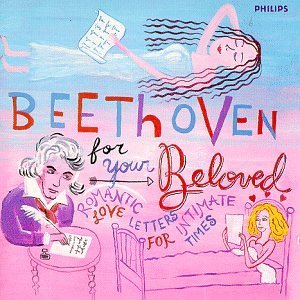Piano Trio 5 in D, Op.70, No. 1 "Ghost" (1808)
I. Allegro vivace e con brio 0:00
II. Largo assai ed espressivo 10:18
III. Presto 21:58
Performed by the Beaux Arts Trio
CHANNEL LINK (Click here to see this video on my YT Channel. Once there, click on "...(more info)" and then you can view the video in place, while scrolling through the form analysis text below more easily)
I. Allegro vivace e con brio (Sonata form)
Exposition:
1st theme / 2nd theme (BROWN)
2nd Theme (BLUE)
3rd theme (GREEN)
Exposition (repeat):
1st theme / 2nd theme (LT BROWN)
2nd Theme (LT BLUE)
3rd theme (LT GREEN)
Development:
1st theme (PURPLE)
2nd theme (PURPLE)
1st theme (PURPLE)
Recapitulation:
1st theme (BROWN)
2nd theme (BLUE)
3rd theme (GREEN)
Development (repeat):
1st theme (LT PURPLE)
2nd theme (LT PURPLE)
1st theme (LT PURPLE)
Recapitulation (repeat):
1st theme (BROWN)
2nd theme (BLUE)
3rd theme (GREEN)
Coda (PURPLE)
(actually the Rich book calls the 1st Recap an Exposition repeat with "variations" but that can't be right...I prefer to think of it as a recap that repeats)
II. Largo assai ed espressivo (Sonata form)
Exposition: 1st theme (BROWN)
2nd theme (BLUE)
3rd theme (GREEN)
Development: (PURPLE)
1st theme
2nd theme
1st theme (return)
Exposition (repeat):
1st theme (LT BROWN)
2nd theme (LT BLUE)
3rd theme (LT GREEN)
Development (repeat): (LT PURPLE)
1st theme
2nd theme
1st theme (return)
Coda (3rd theme) (MAROON)
III. Presto (Sonata form)
Exposition: 1st theme (BROWN)
2nd theme (BLUE)
3rd theme (GREEN)
Exposition (repeat):
1st theme (LT BROWN)
2nd theme (LT BLUE)
3rd theme (LT GREEN)
Development: (VIOLET)
3rd theme
1st theme
Recapitulation:
1st theme (BROWN)
2nd theme (BLUE)
3rd theme (GREEN)
Coda (PURPLE)
(from Alan Rich's Play by Play)
Since I've covered the Ghost Trio 3 times now, I think I'll stick this excellent live performance of the Ghost Trio here, instead of making post #4. Unfortunately I'm not sure who the performers are - but they are good!



























